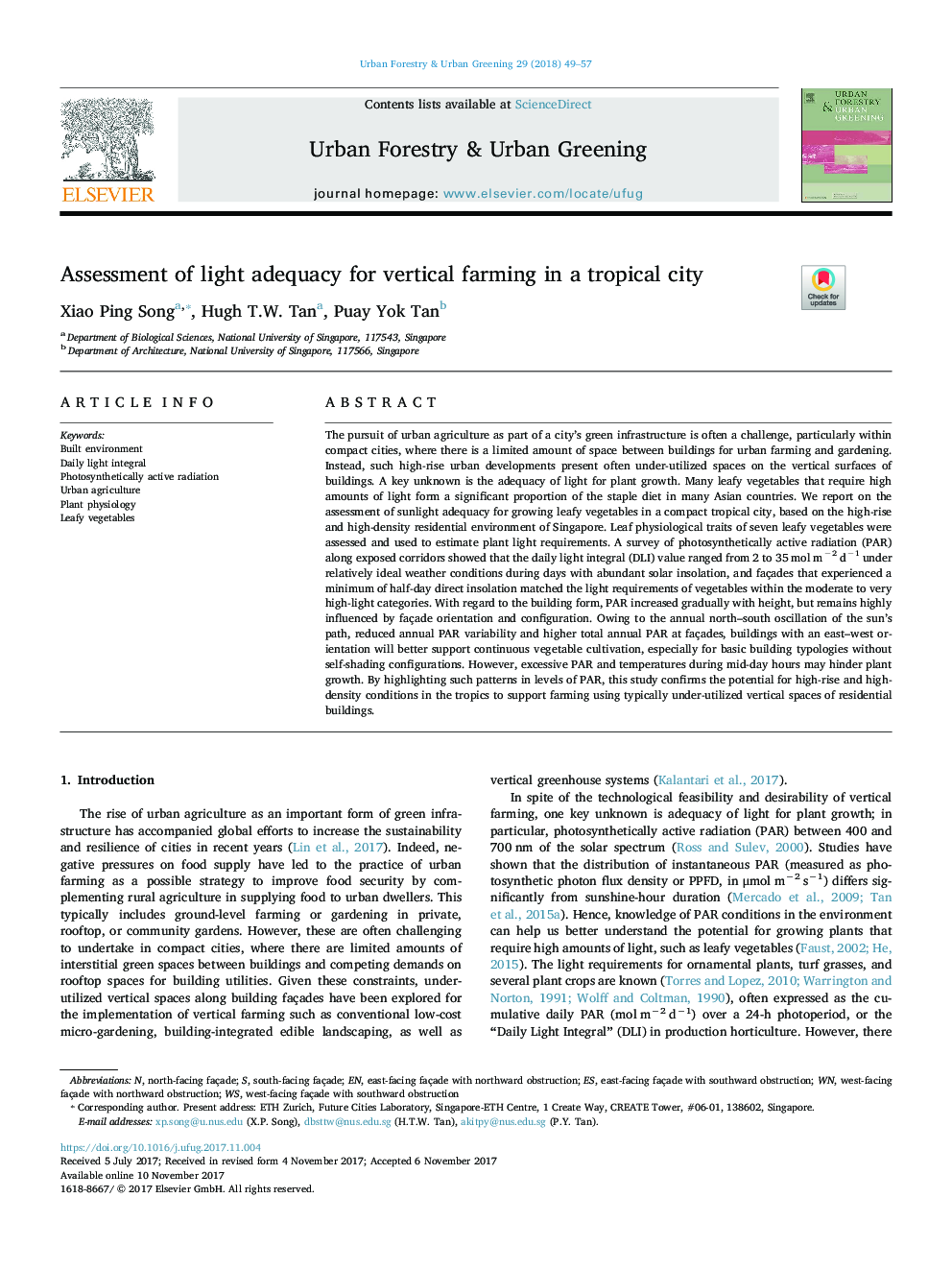| Article ID | Journal | Published Year | Pages | File Type |
|---|---|---|---|---|
| 6549386 | Urban Forestry & Urban Greening | 2018 | 9 Pages |
Abstract
The pursuit of urban agriculture as part of a city's green infrastructure is often a challenge, particularly within compact cities, where there is a limited amount of space between buildings for urban farming and gardening. Instead, such high-rise urban developments present often under-utilized spaces on the vertical surfaces of buildings. A key unknown is the adequacy of light for plant growth. Many leafy vegetables that require high amounts of light form a significant proportion of the staple diet in many Asian countries. We report on the assessment of sunlight adequacy for growing leafy vegetables in a compact tropical city, based on the high-rise and high-density residential environment of Singapore. Leaf physiological traits of seven leafy vegetables were assessed and used to estimate plant light requirements. A survey of photosynthetically active radiation (PAR) along exposed corridors showed that the daily light integral (DLI) value ranged from 2 to 35 mol mâ2 dâ1 under relatively ideal weather conditions during days with abundant solar insolation, and façades that experienced a minimum of half-day direct insolation matched the light requirements of vegetables within the moderate to very high-light categories. With regard to the building form, PAR increased gradually with height, but remains highly influenced by façade orientation and configuration. Owing to the annual north-south oscillation of the sun's path, reduced annual PAR variability and higher total annual PAR at façades, buildings with an east-west orientation will better support continuous vegetable cultivation, especially for basic building typologies without self-shading configurations. However, excessive PAR and temperatures during mid-day hours may hinder plant growth. By highlighting such patterns in levels of PAR, this study confirms the potential for high-rise and high-density conditions in the tropics to support farming using typically under-utilized vertical spaces of residential buildings.
Keywords
Related Topics
Life Sciences
Agricultural and Biological Sciences
Forestry
Authors
Xiao Ping Song, Hugh T.W. Tan, Puay Yok Tan,
